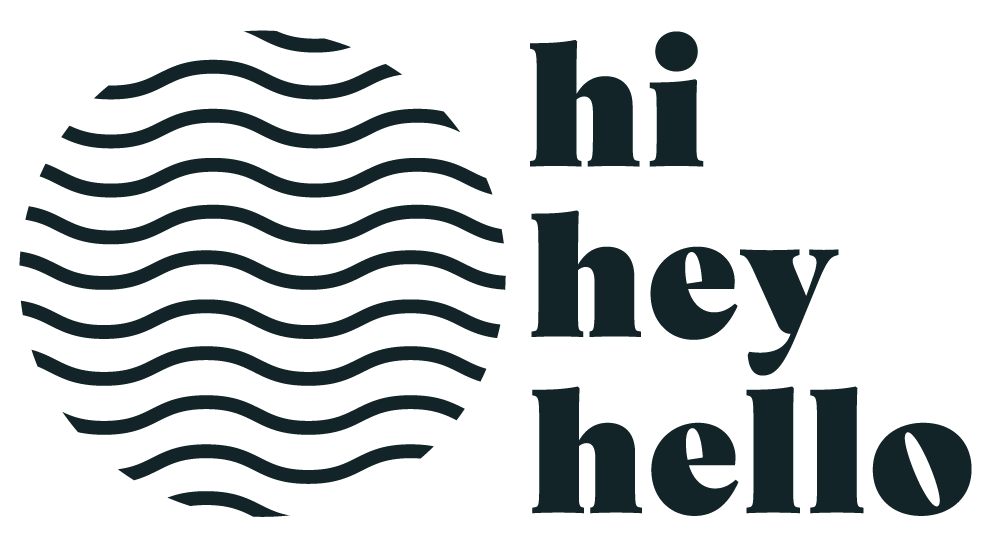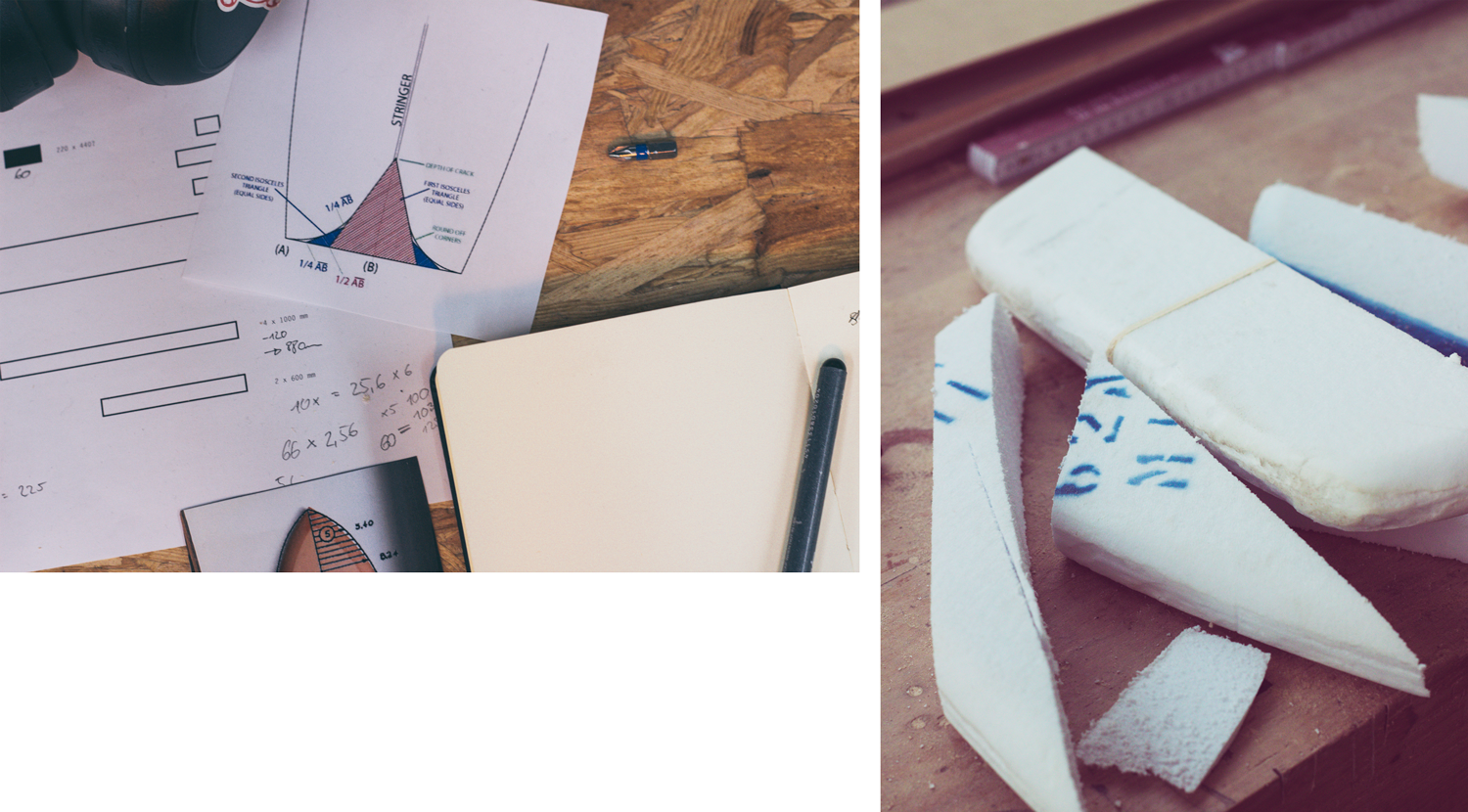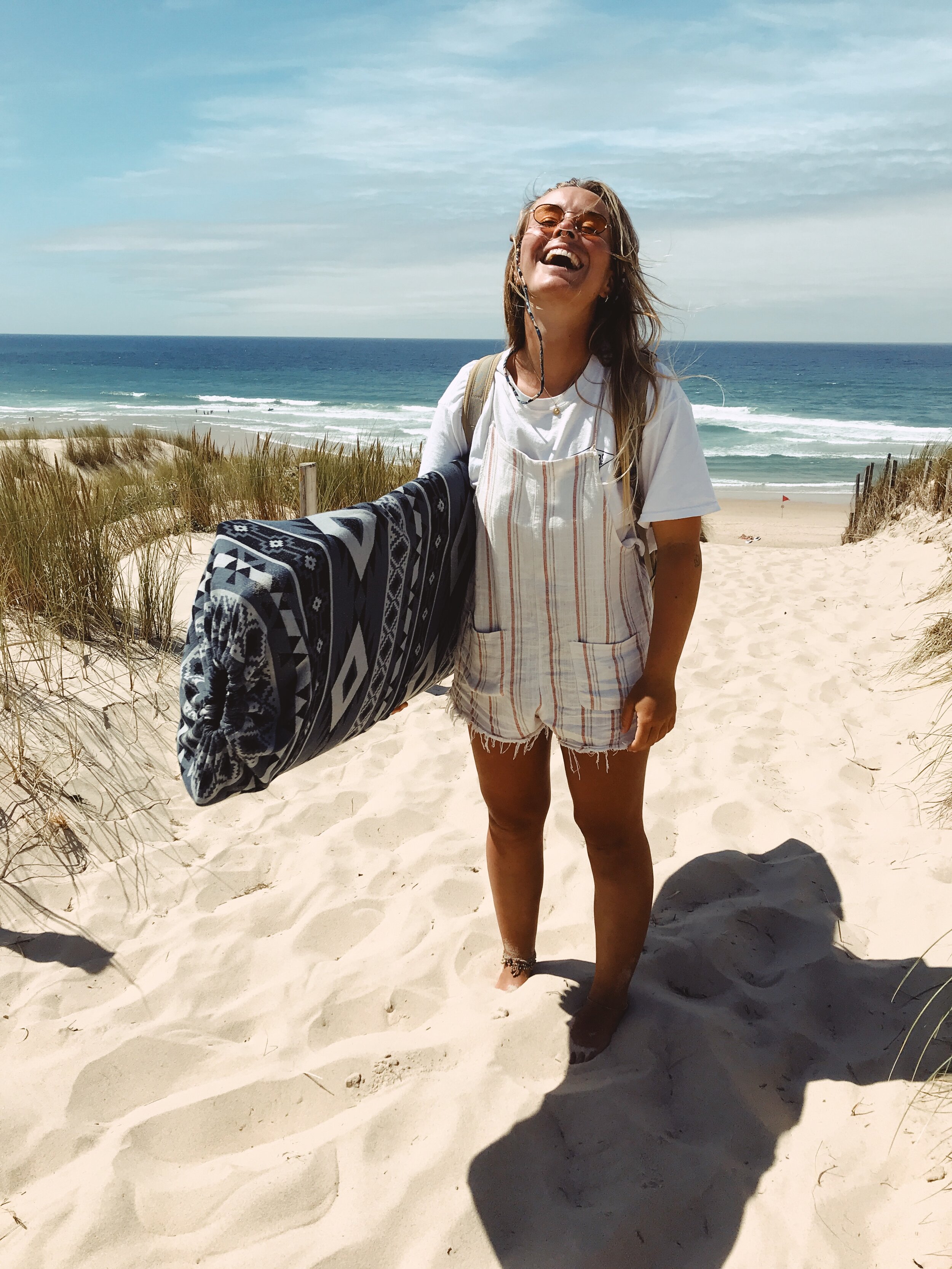The Process of Shaping a Surfboard by Hand
Interview with Elisa Schmidt
Elisa, a German design student, dabbles in many creative endeavors; photography, videography, illustration and “anything she can make beautiful.” Her most recent project was more tactile, fusing craft with her love for surfing. Elisa took on the laborious project of hand-shaping and glassing a retro-inspired surfboard.
“I've always loved working with my hands and creating stuff. I definitely owe that to my dad. As a kid, I loved spending my Saturdays with him in our garage just watching him build things or putting together little furniture for my dolls. That continued throughout my life with a lot of smaller projects like making jewelry, macrame, painting, and drawing.”
After surfing for the first time in Australia, Elisa couldn’t imagine not surfing. Inspired, she quit her job and applied to study design. To fulfill a mandatory internship, she worked for five months as a photographer in a surf school on Fuerteventura, a small Spanish island. Soon, she was spending every summer in surf camps, taking photos or cooking breakfast. She honed her early skills using a foam-top longboard, eventually graduating to surfing varied shapes and sizes and developing her surfing style. Last year Elisa spent an exchange semester in Lisbon, living close to a perfect longboard spot. “I try to spend as much time as possible close to the ocean and take every chance to get to surf.”
The idea to build a surfboard was sparked when Elisa began repairing her own surfboards with resin and fiberglass. Elisa purchased a blank from a local shaper and took over her carpenter-boyfriend’s workshop for a month while he was traveling. “I was super lucky! I had my own little shaping room all to myself. He already had useful tools like an electric planer, a milling machine, saws, and measurement tools. I had to purchase a few tools, but had a really good base.”
Elisa opens up about her experience and what she learned from shaping her first surfboard.
What shape board did you decide to shape and why?
ES: Choosing a shape and narrowing it down to one was one of the toughest decisions. I decided to shape a fish for my first board. Fish shapes were the first short surfboards, introduced in the 1960s. Before that everyone was riding longboards. I found a lot of information about one of the first fish shapes, designed as a kneeboard by Steve Liss. That was my starting point. I surfed a friend’s board, made by a modern French shaper, which I really enjoyed. I looked up those board dimensions online. I viewed many different models, measured them out on my laptop and did a lot of calculating (I was super confused between metric and imperial units in the beginning) until I had the outline of my board.
The aesthetics of the retro-fish shapes are beautiful and they are a nice addition to a quiver, especially as I mostly surf the French Atlantic coast in summer. Generally, the waves aren't super steep so catching waves with a shortboard can be difficult. The shape of a retro fish is short but still has a lot of volume. It floats and paddles well, making it easier to get waves, and that’s the most important thing, isn't it?
Also, I’m not drawn to the shortboard style which is more hectic with radical turns and maneuvers. Riding a fish is more graceful. It looks beautiful.
Did you have a mentor or just go for it?
ES: I really just went for it! I could have asked the local shaper for some assistance, but I like doing things on my own, without anyone watching over me. I’m proud that this is completely my own achievement. Of course, I spent hours and hours on the internet watching videos of shapers and reading forums. I had no idea how long it took to shape the board. In the time span of a month I spent many days in the workshop and also did research on my computer. I’m sure the board would cost thousands if anyone paid for my hours!
Talk us through your process and highlight any major challenges.
ES: To be honest, pretty much everything was a challenge! There are so many considerations and I knew nothing in the beginning. Now, I feel like I could write a whole book about the process! Once I had the foam blank in the workshop, it took me a few days to find the courage to draw the outline, and start cutting away with a saw.
I am a perfectionist, especially in things that mean a lot to me. Shaping is a subtractive process. Once you take away material, you have to live with it. That was definitely a real challenge for me.
Once I had the outline right, I considered the thickness and the rocker of the board. That was another massive amount of research, measuring and calculating.
At this point, the foam resembles a surfboard. There are just so many aspects of a surfboard I had never considered. The bottom and the top of the board have to be designed, there are so many different forms of fish tails, various options to position your fins, and a thousand different ways to shape your rails and so on. It literally never stops.
Glassing the board, to make it durable and waterproof, took me as long as the entire shaping process. I chose to do a colored board and added pigments into the resin. The fiberglass is laid over the foam blank, then the resin is added. It is a short timeframe to apply the resin once it begins to go sticky and hard, it stays there forever. The first time I applied the resin, I didn't like the color at all. It was some sort of dirty yellow, and it didn't spread evenly. It wasn’t acceptable. Also, for the edges, like on the tail, you have to cut the fiber cloth so it wraps around them. I made way too many cuts and around the tail there were huge bits of the board where there was no cloth at all. And that's the part that has to be the strongest. So in a split second, I stripped the cloth off and wiped as much of the resin off as was still possible. I could have cried out of anger toward myself. I thought I had ruined it. I then sanded it down again, which made it a bit thinner than originally planned. I ordered new resin and cloth and did it all again. And it came out beautifully!
When you are shaping, what are you feeling?
ES: It is definitely therapeutic for me. The whole process was a big learning curve, and I got to know myself a bit better. I spent a lot of time alone in the workshop, facing the challenges by myself. When I was in the workshop, I just got into a flow and completely lost track of time. I sometimes went early in the day and left at midnight. Every little step took me so long because I wanted it to be perfect. In the end, it's just the best feeling in the world to know what I am capable of. Everything worked out as I had hoped for! There was definitely some cursing too!
Does it feel different to surf on a board you created?
ES: I love it! I was really anxious to try it out but I had to wait a few months after finishing it to go to the ocean. I caught the first wave I paddled into, stood up, and felt really natural riding it. It is hard to explain but the board reacts really well and when paddling it feels like it is one with my body. I would have NEVER expected it to perform so well. I always tried to convince myself that it would be ok if it was not good in the water, but I haven't noticed a thing I would change!
I definitely have a special connection to that board. It's like my baby.
Will you be shaping any more boards in the near future?
Yes! I'm about to order new materials. I hope it will get a little easier with every board I make. This time I'm shaping with a friend of mine so it will be a different experience. I can't wait to get back into the workshop in a few weeks. She's a designer and illustrator as well. We're planning on documenting the whole process and maybe create a small booklet or something. I'm really excited!
What is your next surf adventure?
I will surf the coast of France this summer. I'm also planning to go to Bali this year for the first time. I'm looking forward to surfing the picture-perfect waves you always see floating around Instagram!







